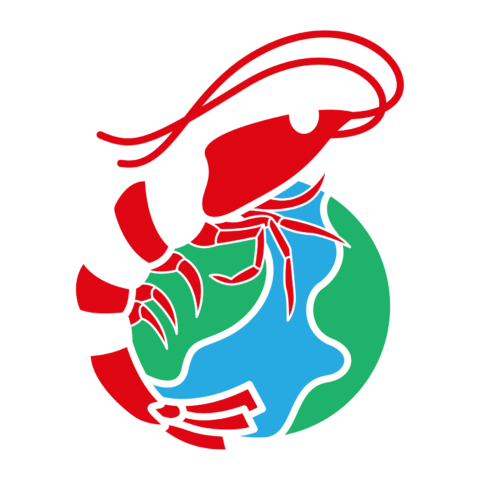Cherry red shrimp, aka red morph or cherry shrimp, is a species of the Atyidae family. The Neocaridina davidi species has many variants, but the red cherry shrimp is more popular and widespread. This dwarf species is omnivorous and can eat a wide variety of foods.
Cherry red shrimp are good algae eaters, but they do not feed on all common types of algae. Also, they can gorge on a lot of algae, despite their diminutive size. However, do not expect the tiny shrimps to prevent an algae bloom or clean up a whole infested tank.
Red cherry shrimp’s role and impact as an algae eater vary based on the water parameters in a tank, available nutrients, and organisms flourishing in your aquarium. Read on to find out why cherry red shrimp are good algae eaters and which types they avoid or do not feed on at all.
Why Are Cherry Red Shrimp Good Algae Eaters?
Cherry red shrimp are good algae eaters because they are detritivores as a species. All detritivorous organisms feed on decaying or dead animal and plant matter. Hence, algae as a plant is a natural food source for cherry red shrimp and other detritivores species.
Also, red cherry shrimp is an opportunistic eater. Thus, the tiny creatures are instinctively drawn to the algae growing or available in your tank.
Most variants of the Neocaridina davidi species have this penchant for algae. However, the red morph of the cherry shrimp species is more prevalent than the orange or yellow sakura, green jade, striped or rili, and blue dream, jelly, or velvet.
Furthermore, you should note the distinction between cherry red shrimp and crystal red shrimp. The crystal red variant is a type of bee shrimp. Its Caridina cantonensis species is a part of the common Atyidae family. However, the crystal red shrimp is not the same as cherry red shrimp.
How Do Cherry Red Shrimp Eat Algae?
Cherry red shrimp eat algae growing on the decorative objects, plants, rocks, substrate, filters, and glass walls of your aquarium. Generally, a group of red cherry shrimp targets a cluster of algae and consumes all of it before moving on to another patch to feed on.
These shrimp are not overzealous eaters, albeit they are opportunistic. Hence, you may find a group feeding on algae alongside one another. However, none will display any aggressive behaviors towards the others. In other words, cherry red shrimp will peacefully feed on algae.
The tendency of red cherry shrimp is to spend a while on a patch of algae at a specific location because the tiny creatures take a long time to consume the available food. Also, algae do not have much nutrition for cherry red shrimp. Therefore, they are not content with palatable algae.
Do Cherry Red Shrimp Eat All Types of Algae?
Cherry red shrimp do not eat all types of algae. They prefer to eat soft green, brown, hair, brush, thread, free-floating, and fuzz algae. They may also feed on black beard, Rhizoclonium, and Oedogonium, but do not eat green spot or dust, blanket weed, blue, staghorn, and red slime algae.
The most common types of algae in a fish tank or aquarium are:
- Green (including thread or hair).
- Green water (the amorphous kind).
- Brown algae.
- Blue-green algae.
- Red or beard algae.
You have a problem if your tank has green dust or spot algae, blanket weed, staghorn, and red slime. Also, cherry red shrimp don’t eat blue-green algae, which is essentially cyanobacteria. The organism is capable of photosynthesis, but it is not exactly a plant or algae.
Besides, you have to prevent algae blooming due to excessive nitrate and phosphate. These two essential nutrients can facilitate an outbreak of blue-green algae and other variants. Also, excess nitrate is not suitable for cherry red shrimp in a confined tank or aquarium.
Therefore, you may have to deal with an algae bloom and a dwindling or unhealthy population of cherry red shrimp in your tank.
Can You Use Cherry Red Shrimp As Algae Eaters?
You can use cherry red shrimp as algae eaters, but you must investigate the cause of a bloom. While red cherry shrimp can mitigate a tank’s problem, the crustaceans cannot prevent or fully neutralize an algae bloom. Thus, you must address the causal problems.
A tank may encounter algae bloom due to excessive feed, nitrate, phosphate, and changes in the essential water parameters, be it pH, general hardness (GH), carbonate hardness (KH), or total dissolved solids (TDS).
Also, you must note that red cherry shrimp do not feed on fish poop. Dead or decaying animal and plant matter is not the same as poop, so timely cleaning and maintenance are essential.
Conclusion
Cherry red shrimp are excellent algae eaters unless there is an unchecked bloom and the tank parameters are unsuitable for the tiny creatures. Thus, you can rely on red cherry shrimp to go for much of the algae in a tank, but not all types and when the little wonders are overwhelmed.
Sources
- University of Florida – Entomology & Nematology: Cherry Shrimp
- Hudson Institute of Mineralogy :Mindat.org: Caridina Cantonensis
- WebMD Pets: How To Remove Algae from a Fish Tank
- Britannica: Blue-Green Algae
- University of California, Berkeley: Introduction to the Cyanobacteria
- Carleton College Science Education Resource Center: Nitrates & Phosphates and Algae
- Aquarium Info: Red Cherry Shrimp
Recent Posts
How Do Freshwater Shrimps Live? Freshwater shrimp are fascinating creatures that play a crucial role in aquatic ecosystems. They help maintain water quality by consuming algae and decomposing...
How Many Freshwater Shrimp Per Gallon? 4 Key Factors Freshwater shrimp are popular additions to aquariums, but many hobbyists wonder: how many shrimp can comfortably live in a gallon of water? The...

